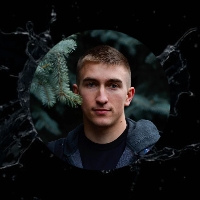Set Up Dutch Aquascapes Style In Your Aquarium.
- Dec

- Feb 28, 2024
- 3 min read
The Dutch Style aquascaping is characterized by its lush and colorful display of aquatic plants arranged in a highly structured and manicured manner. Here are key features of the Dutch Style:
1. Plant Diversity:
Dutch aquascapes are known for their extensive use of a wide variety of plant species. Different colors, leaf shapes, and textures are carefully selected and arranged to create a vibrant and visually stimulating display.
2. Foreground and Background Plants:
The layout typically includes a well-defined foreground, midground, and background. Shorter plants like carpeting species are often used in the foreground, while taller and more eye-catching plants are placed in the background.
3. Symmetry and Order:
Unlike some other aquascaping styles, Dutch aquascapes often exhibit a high degree of symmetry and order. Rows of plants are arranged in a neat and organized fashion, creating a structured and formal appearance. 4. No Hardscape Elements:
Unlike Nature Aquarium style, Dutch aquascapes generally do not incorporate hardscape elements like rocks or driftwood. The focus is primarily on the arrangement and beauty of the plants themselves.
5. Highlighting Color Contrasts:
The use of contrasting colors is a key aspect of Dutch aquascaping. Aquascapers intentionally select plants with different leaf colors and arrange them in a way that highlights these contrasts, creating a visually striking composition.
6. Regular Maintenance:
Dutch aquascapes require regular pruning and maintenance to prevent overgrowth and maintain the desired shape and structure. This ensures that each plant species contributes to the overall aesthetic without overshadowing others. The Dutch Style originated in the Netherlands and gained popularity in the 1930s. It remains a classic and well-appreciated aquascaping style, particularly for those who enjoy the meticulous arrangement of a diverse range of aquatic plants in a structured and colorful manner.
Below are more aquascaping styles you can try for your aquarium.
1. Nature Aquarium Style:
Emphasizes a natural and realistic underwater landscape with a balance of plants, rocks, and driftwood. Created by Takashi Amano, it often follows principles of asymmetry and the “Golden Ratio.”
2. Dutch Style:
Known for its vibrant and colorful display, the Dutch aquascape features a meticulous arrangement of a diverse range of aquatic plants in a structured and ordered manner, without incorporating hardscape elements like rocks or driftwood.
3. Iwagumi Style:
Focuses on simplicity and balance, primarily utilizing carefully arranged rocks to create a harmonious and tranquil underwater environment. The layout often features a minimalistic selection of plants, and driftwood is usually not included in Iwagumi Style of aquascaping.
Click Here For More Information
4. Biotope Aquascaping:
Aims to replicate a specific natural habitat within the aquarium, including the substrate, plants, and fish that are native to the chosen geographic location. It provides an authentic representation of biotope ecosystems found in the wild.
Click Here For More Information
5. Paludariums:
Combining elements of both aquariums and terrariums, paludariums feature a mix of aquatic and terrestrial plants, along with land areas for animals like amphibians. It creates a dynamic environment that spans both land and water.
6. Jungle Style:
Inspired by overgrown and lush tropical environments, the Jungle aquascape features an abundance of various plants, often with a more uncontrolled and wild appearance. It aims to recreate the dense vegetation found in rainforests. Each of these styles offers a unique approach to aquascaping, allowing hobbyists to express their creativity and preferences while creating captivating and visually appealing underwater landscapes.
#beginnertank #Layout #careguide #design #Anubis #aquascaping #guide #plantedtank #blogging #plantedfishtank #aquariumadvice #information #biotope #Aquariumhobby #fishtank #NaturalAquarium #Aqauscape #fishkeeping #howto #aquarium #freshwateraquarium #nanofishtank #communitytank #HowtoSetUpanAquarium









Comments